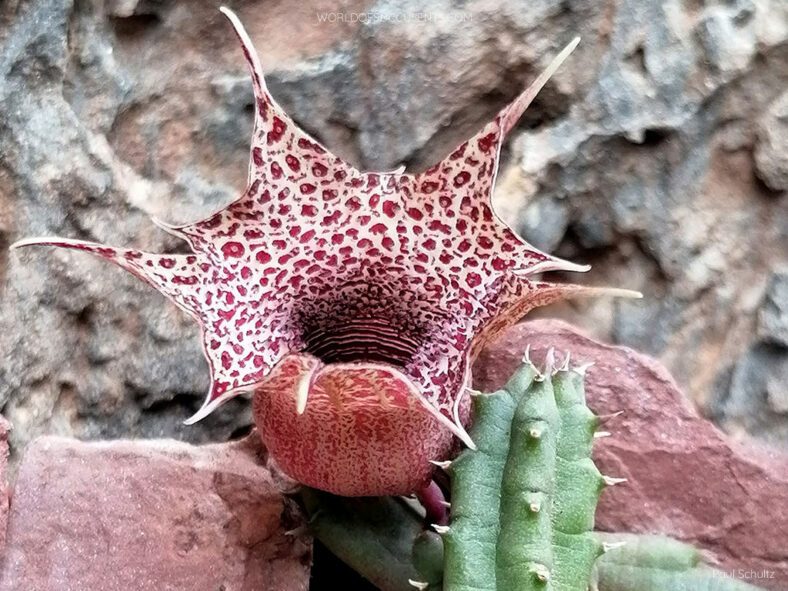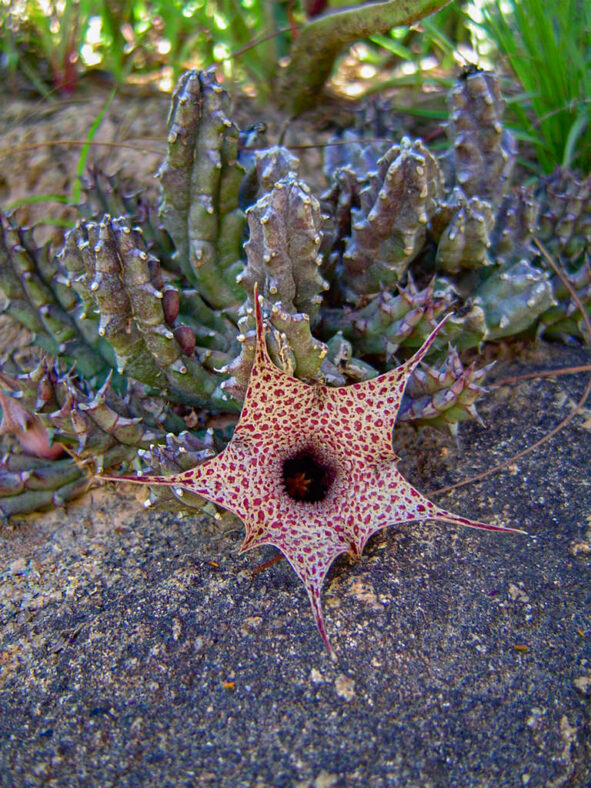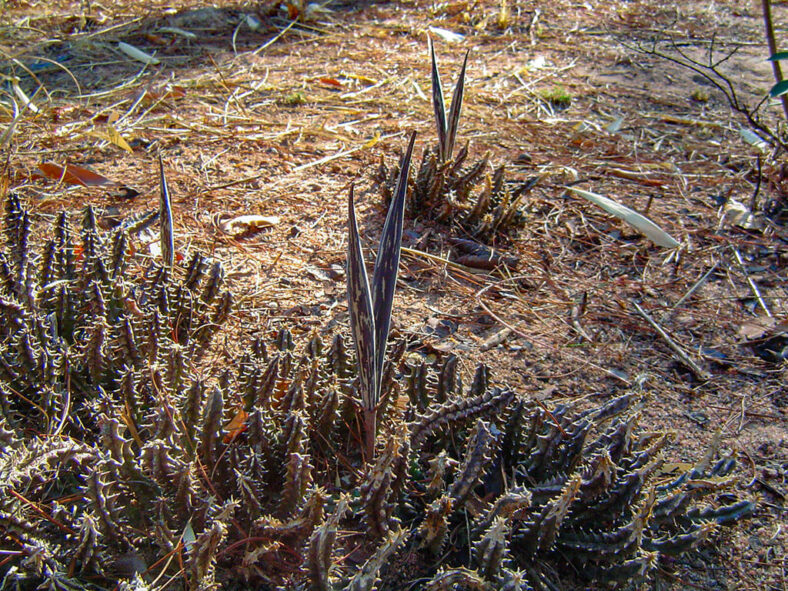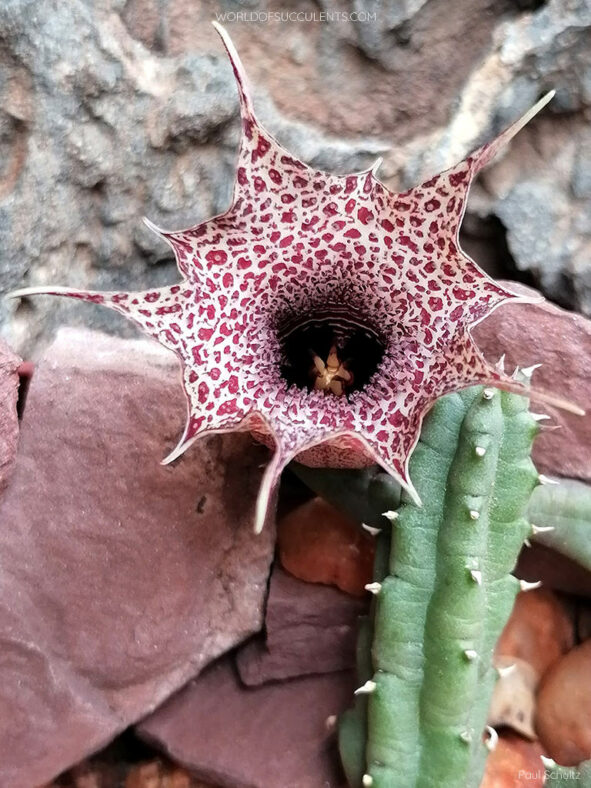Huernia hislopii is a small, easy-to-grow plant with beautiful flowers that emit an unpleasant odor to attract carrion flies, which are pollinators.
Scientific Name
Huernia hislopii Turrill
Synonym(s)
Ceropegia hislopii, Huernia hislopii subsp. hislopii
Scientific Classification
Family: Apocynaceae
Subfamily: Asclepiadoideae
Tribe: Stapeliae
Genus: Huernia
Etymology
The specific epithet "hislopii" (pronounced his-LOP-ee-eye) honors Alexander Hislop (c.1880-1945), a British botanist who collected plants in Rhodesia (today's Zimbabwe) and died there in 1945.
Origin
Huernia hislopii is native to Zimbabwe and Mozambique. It grows on granite kopjes and rocky outcrops.
Description
Huernia hislopii is a leafless succulent that grows in clumps of numerous fleshy stems with deltoid tubercles joined into usually five angles along the stem. The stems can be erect or ascending and grow to about 2 inches (5 cm) long, sometimes more, and 0.4 inches (1 cm) thick. During the growing season, they are green, but in winter, the stems can turn reddish-brown. Each tubercle tapers into a stout, sharp tooth.
In the fall, Huernia hislopii produces attractive bell-shaped flowers that can reach a length of 1 inch (2.5 cm) and a diameter of 0.25 inches (0.6 cm). The corolla has five main triangular lobes with a long, narrow tip and five small secondary lobes halfway between the main ones. It is smooth and cream-colored on the outside and papillose and cream-colored with red-brown spots on the inside. The corona has dark maroon to black other lobes and cream-colored inner lobes with red-brown markings.

How to Grow and Care for Huernia hislopii
Light: Huernia hislopii prefers bright light or partial shade during the hottest summer days. Too much sun can cause the stems to develop a protective pigmentation or get sunburned. Too little light results in weak, thin stems and reduced flower production. When grown indoors, place the plant near a bright window in your home.
Soil: The right soil is crucial to successful growing. Use a commercial potting soil mix designed for succulents, or prepare your own by mixing 50% to 70% mineral grit, such as coarse sand, pumice, or perlite.
Temperature: Huernia hislopii thrives in warm outdoor environments with low to moderate humidity. However, it does not tolerate winter cold and should remain fairly dry and warm during its winter dormancy. It grows best in USDA Plant Hardiness Zones 10b to 11b, with average minimum winter temperatures ranging from 35°F to 50°F (1.7°C to 10°C).
Watering: This plant has typical watering needs for a succulent. During the growing season, water it thoroughly and allow the soil to dry between waterings. It goes dormant in winter and requires almost no water, needing only about once a month.
Fertilizing: To keep it healthy and thriving, fertilizing during the growing season is a good idea. Feed with water-soluble fertilizer diluted to half the recommended strength.
Repotting: The plant will benefit from fresh potting soil every 2 or 3 years. Repot it in spring, just before the growing season. Pick a container with drainage holes.
Propagation: The best way to propagate Huernia hislopii is by using stem cuttings. Take cuttings during the growing season to ensure they root well. You can also start this plant from seeds, which is quite easy.
Learn more at How to Grow and Care for Huernia.
Toxicity of Huernia hislopii
Huernia hislopii has no reported toxic effects, so it is safe to grow around children and pets.
Links
- Back to genus Huernia
- Succupedia: Browse succulents by Scientific Name, Common Name, Genus, Family, USDA Hardiness Zone, Origin, or cacti by Genus
Photo Gallery
Click on a photo to see a larger version.


